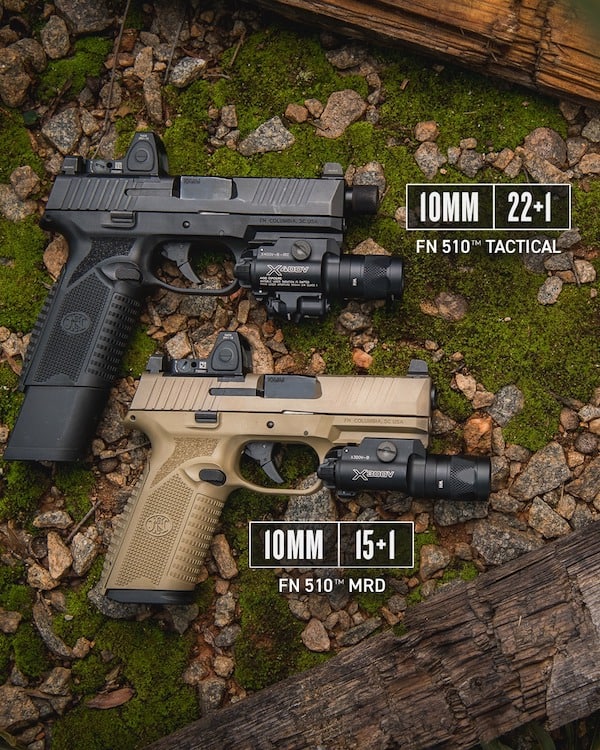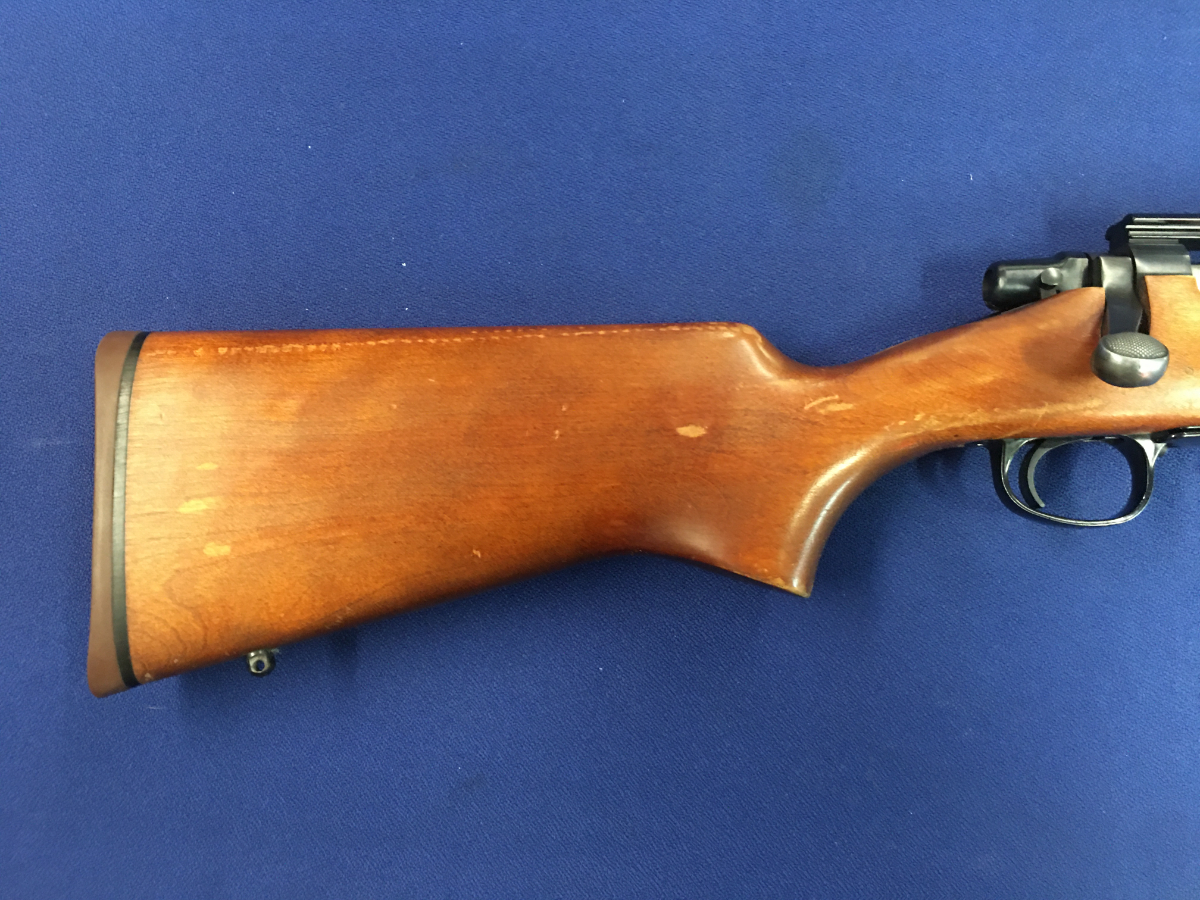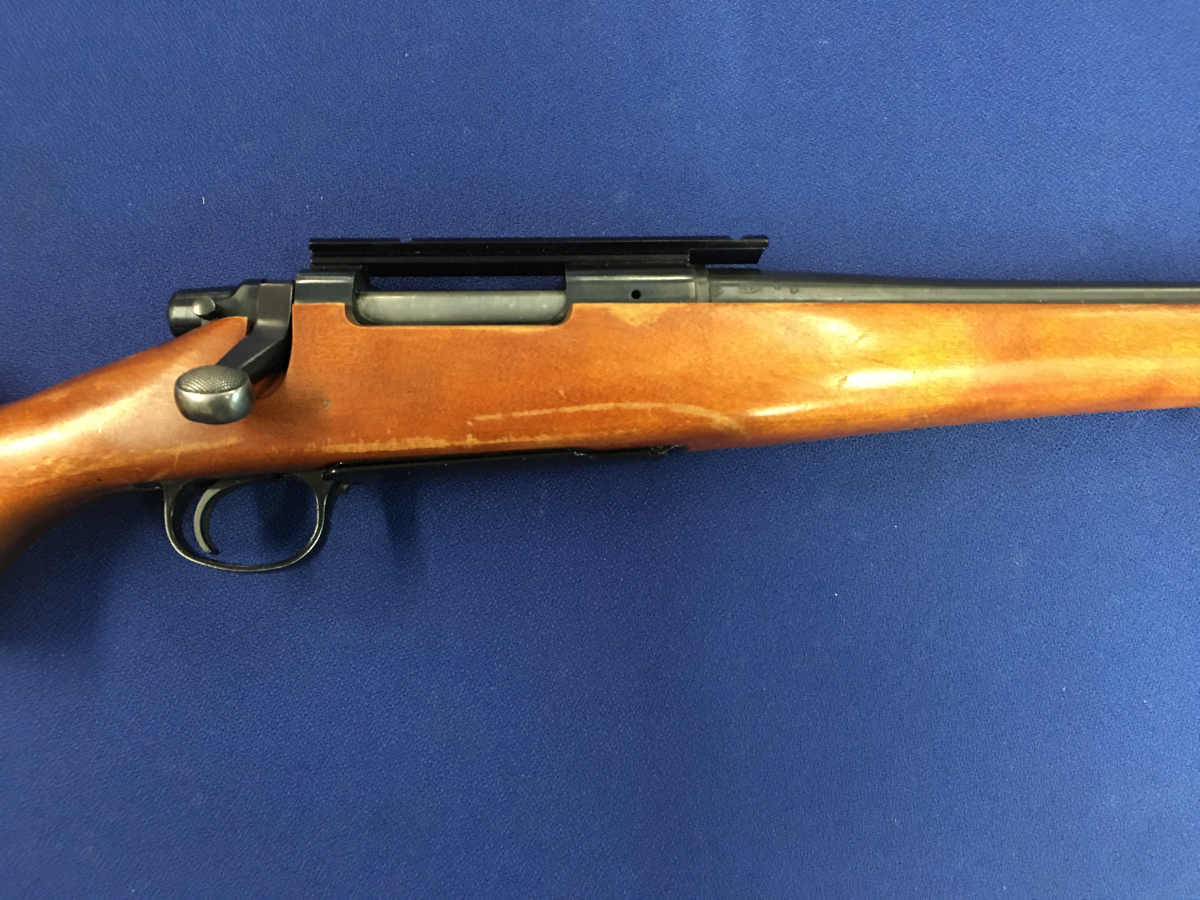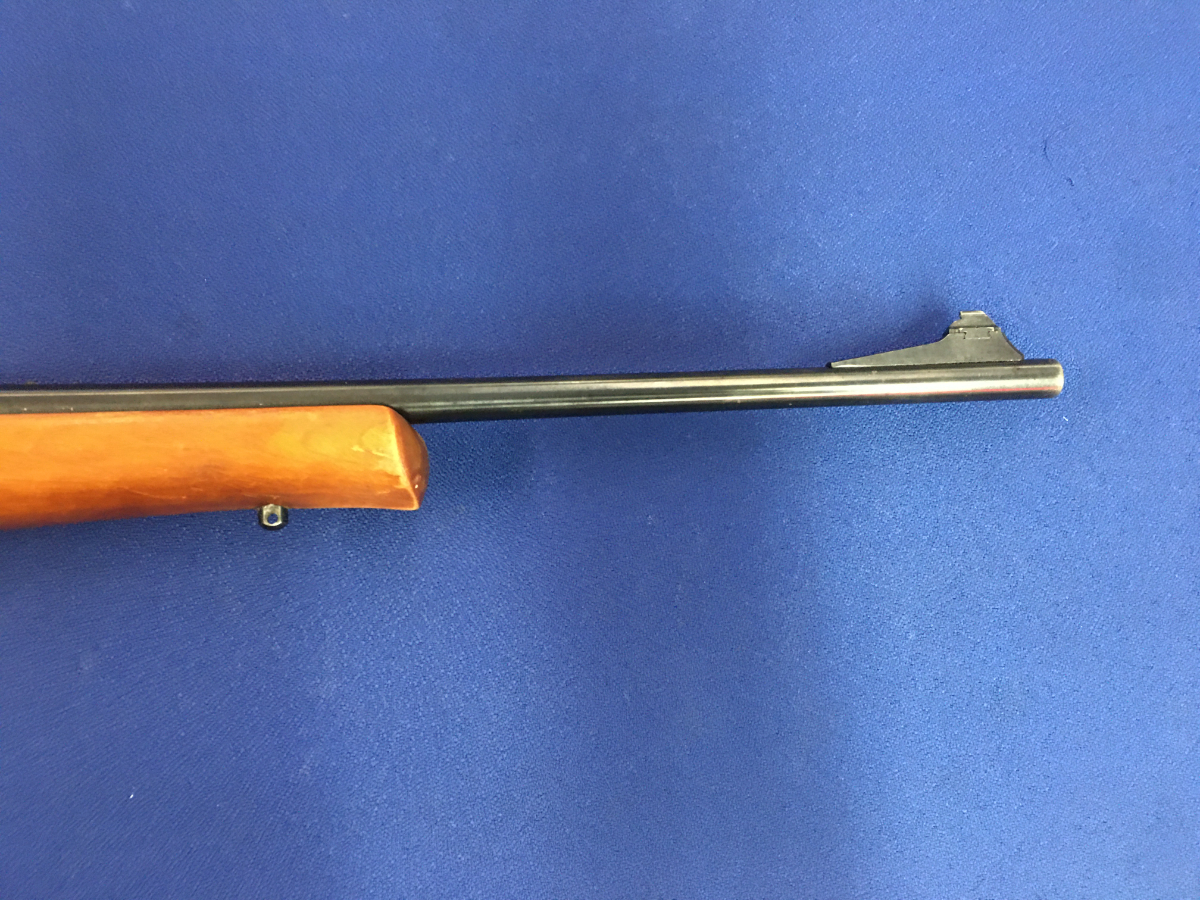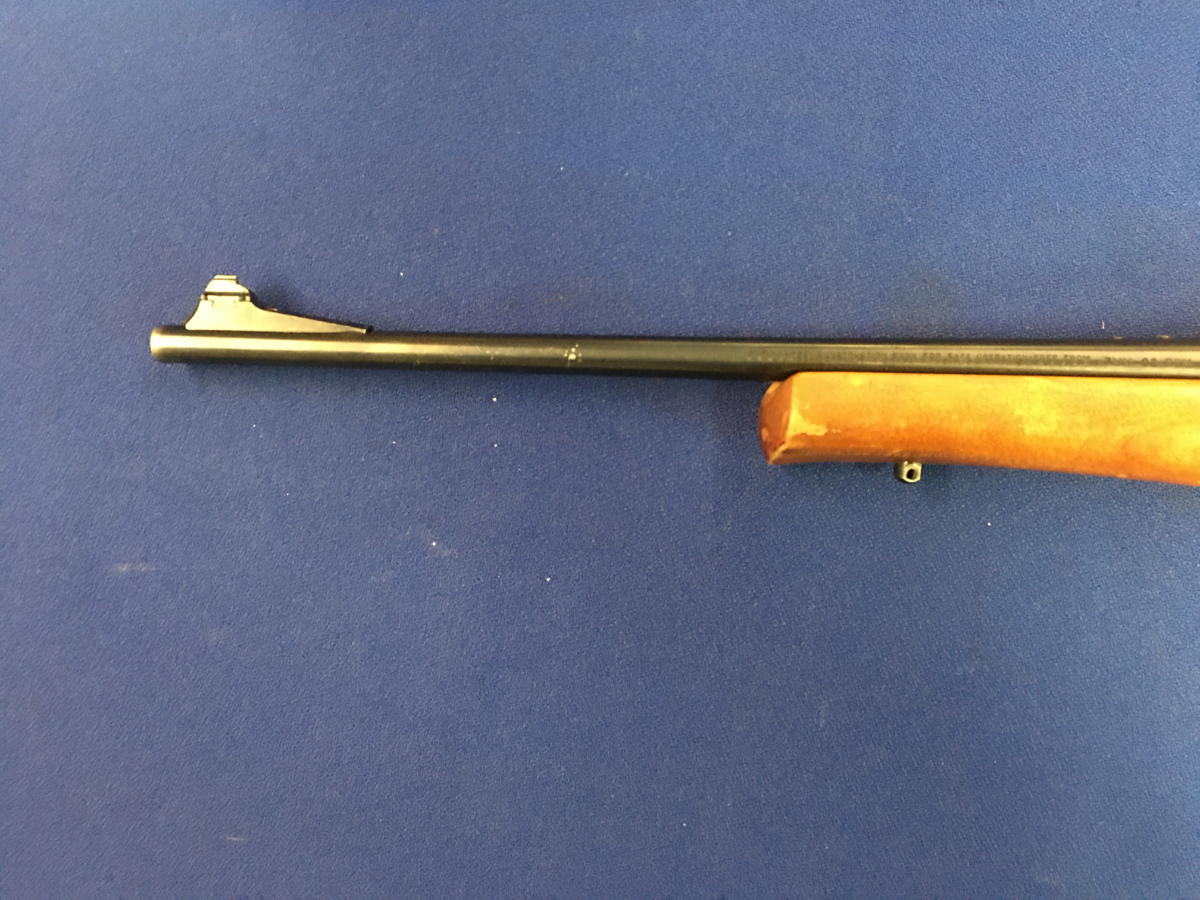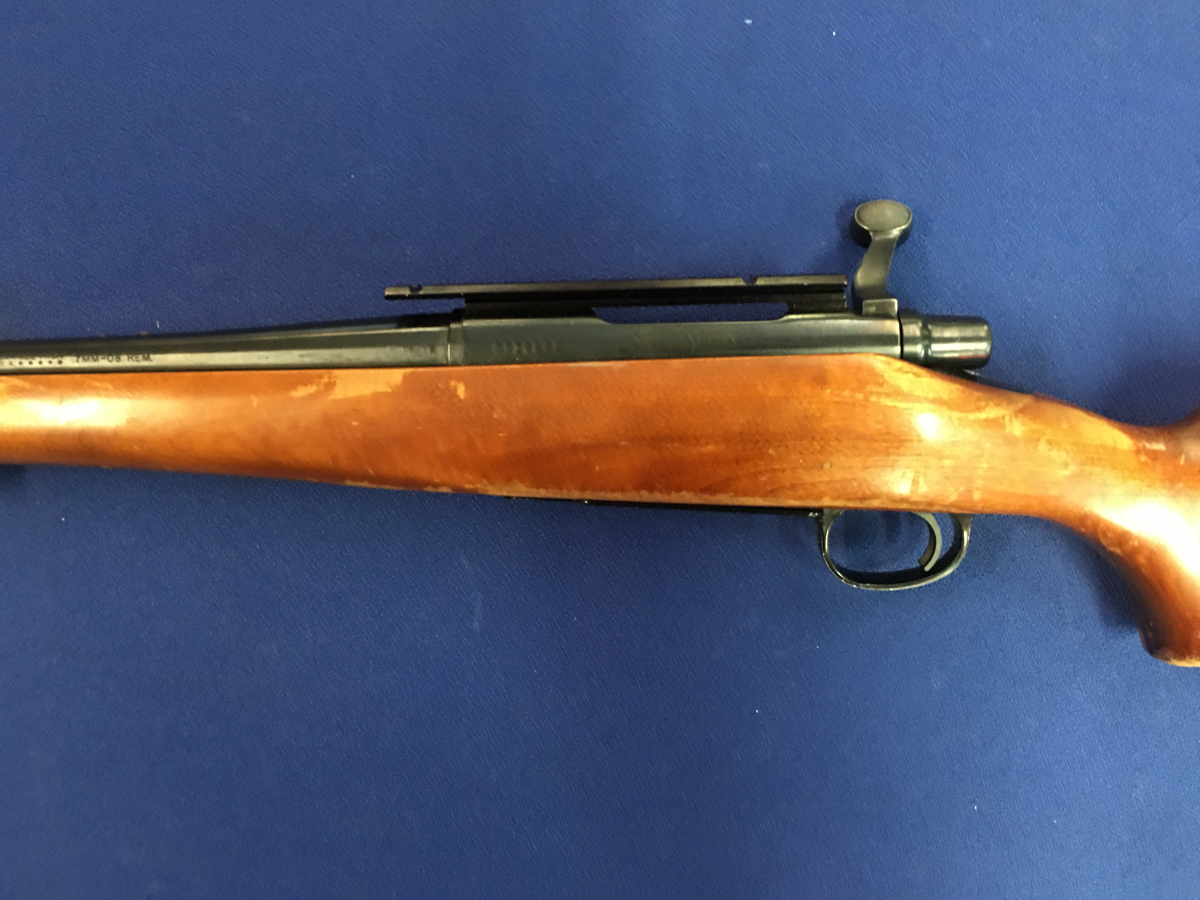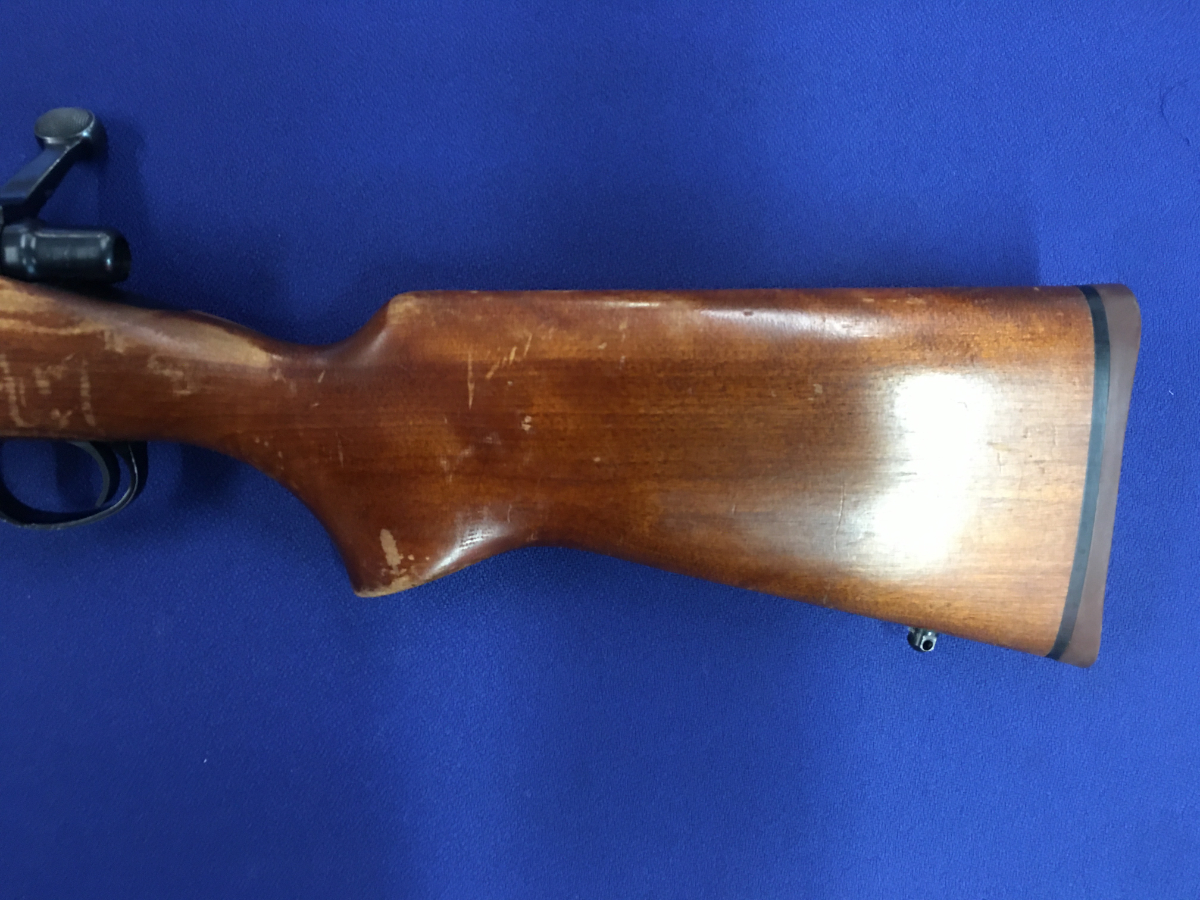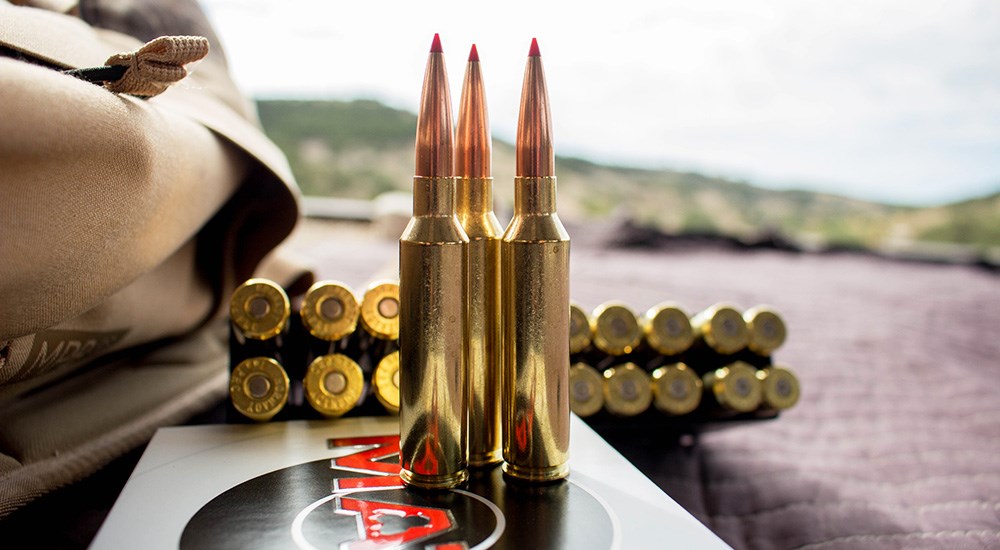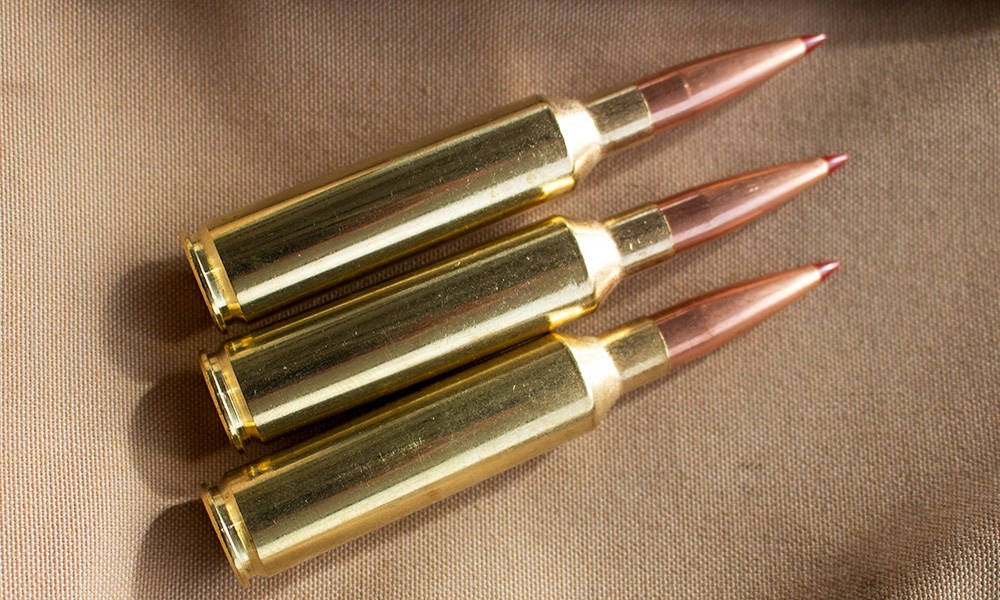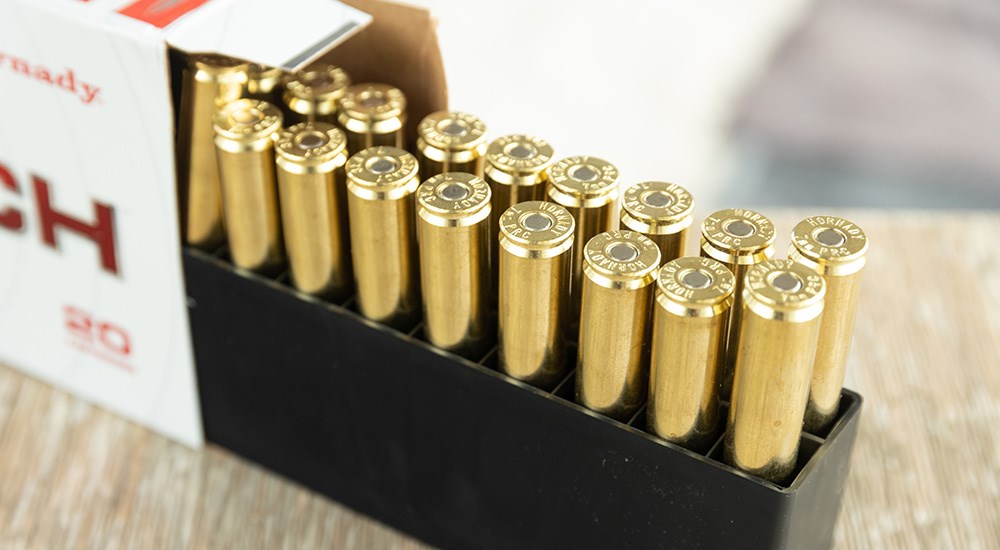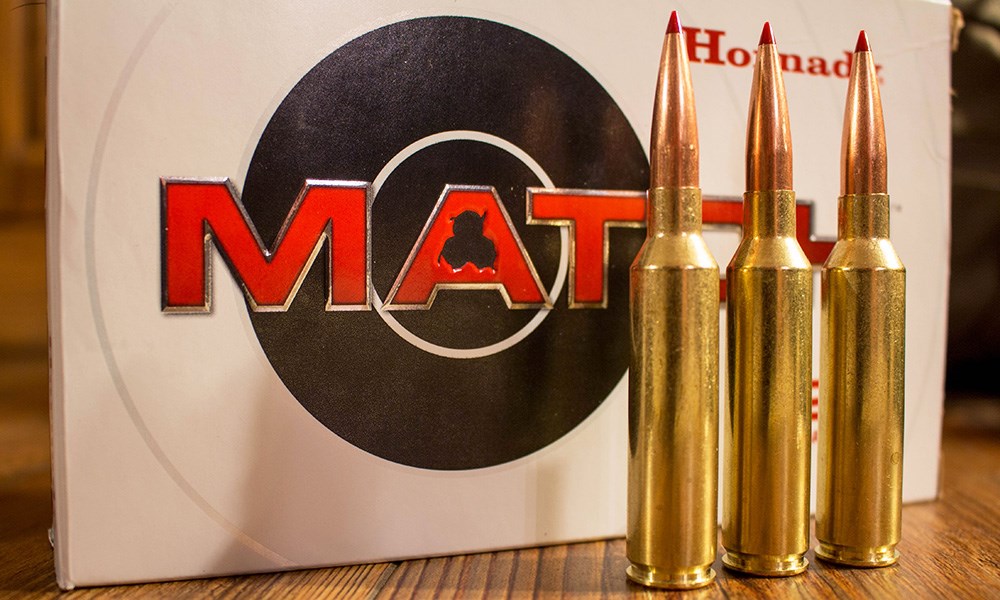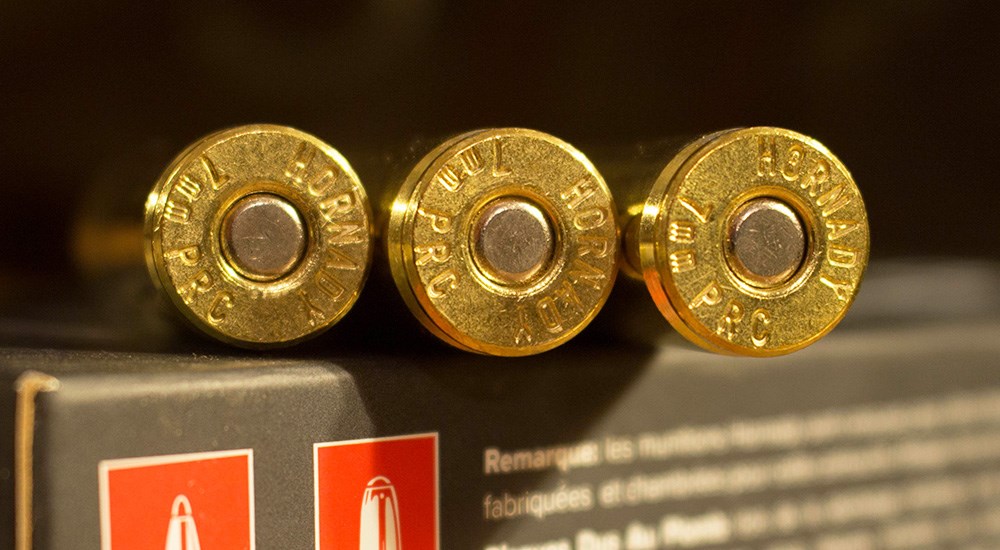This article first appeared in the April 1969 issue of Shooting Times.
By Skeeter Skelton
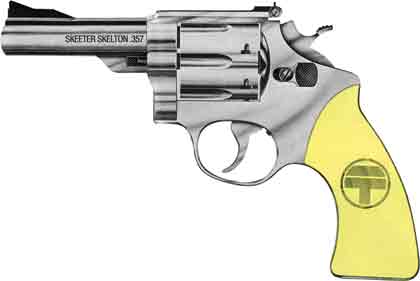
Skeeter’s handgun potpourri results in an attractive, effective gun designed for lifetime service.
|
The editor of this fine magazine has posed an intriguing problem: If the facilities of the great handgun manufacturers were thrown at my disposal to create one handgun to keep and use for the rest of my days, what would my tastes combined with the skills of the designers produce?
I have no ideas for a new cartridge that would be feasible with existing propellants, so the round would have to be one that is already in the book. My hunting and law enforcement work would dictate that it be a powerful load, and one that is readily obtainable everywhere. I would want to reload for my new gun, so plentiful brass and long case life would be factors.
No automatic cartridge is as powerful as the .357 Magnum. The autos throw their brass around a bit too promiscuously to please the handloader. Although production autoloaders are generally less accurate than good revolvers, this is not an issue here because I am planning a tool room job, and the auto could certainly be brought up to top accuracy if it were otherwise acceptable.
It’s no secret that I am fond of single-action revolvers, but a double action has a slight edge as an all-purpose gun. My .357 will be a double action. The DA .357 sixguns now available are all excellent, and I could live with any of ’em if I had to, but there is always room for a little improvement.
For many years I carried the standard Smith & Wesson heavyweight Model 27, fitted out with a 5-inch barrel, 0.1-inch front sight, and Roper grips that were tailored to my hand. Over the seasons I had a total of four of these guns put together to the same specifications, and fine pieces of machinery they were.
Five or six years ago I stated that if I could have only one gun, it would be a Model 27 S&W. This view has relaxed somewhat, and I now more frequently find myself carrying a Model 19 S&W Combat Magnum.
When the Combat Magnum .357 was first introduced more than 10 years ago, I didn’t care much for it. It recoiled more with heavy loads, and the smaller diameter cylinder didn’t give a boost to fast double-action shooting as did the massive cylinder of the older Model 27. Too, when the little revolver first appeared, many shooters had their doubts about its ability to stand up under continued firing of heavy loads.
These fears proved groundless, and the Model 19 is accepted as being as sturdy as any other Magnum when loads within the normal pressure limits of the .357 are used.
My dream gun prototype would have a slightly larger frame and heavier cylinder than the Model 19, mainly to give it a little extra weight to dampen recoil. The frame of the Colt Python is that of Colt’s ancient .41 Long Colt double action and is about right in bulk and weight.
I don’t care for the Colt’s lack of a front cylinder latch and would employ the Smith & Wesson front and rear latch. Some nitpickers claim that the counterclockwise rotation of the S&W cylinder causes the movement of the hand to push the cylinder against its latches, eventually loosening the crane, and that a Colt locks the cylinder in place more tightly because the hand pushes the cylinder toward lock position. I have never seen any tangible evidence to this theory, but as a concession to those who believe in it, I will make my cylinder rotate clockwise.
This will require some changes in the lockwork. The S&W system of a separate trigger rebound spring assembly lends to smoothness of trigger pull, so let’s retain that. I have never broken a mainspring in an S&W, and their leaf springs are certainly smoother than the coil mainsprings in their pocket revolvers. Still, I think Bill Ruger’s idea for an all-coil-spring interior in his single action has produced the most trouble-free revolver yet, so I’ll go the same route. Surely, if they put their minds to it, my gun designers can conjure up a coil mainspring assembly that is smooth on double action.
Rounding out the inner workings of my hybrid, I would adopt the rebounding firing pin of the Colt Python and Ruger Blackhawk. This is a better deal for the handling of hot loads and prevents anyone trying to use your gun’s hammer for a leather punch.
The grip straps of the frame will have to be altered. This feature of our centerfire revolver frames hasn’t changed in this century. The few efforts made to fashion a better-feeling gun handle have produced bulky “target” stocks that simply cover up the poor profile of the steel straps.
High Standard had the right idea when it carved the little Sentinel 22. Instead of the usual dished-out arch behind the trigger guard that lets the fist grab much too deeply, leaving the third finger prey to the raps of the guard, the Sentinel’s strap comes into the guard at a much lower point, lowering the grip, protecting the knuckle, and leaving the trigger finger pulling from a more natural angle. This in turn allows the use of much smaller, more attractive grips and is an altogether comfortable handle. But even the High Standard should fill in more of the gap between the guard and the strap.
The backstrap of the Colt doesn’t have the pronounced inward curve at its top that the S&W does, and I prefer this. Although the heel of my palm is quite fleshy, I find that it tends to slide over this depression in the S&W backstrap, especially when Magnum ammo is fired. Also, I have somewhat better control when the space is filled by custom stocks that are joined behind the backstrap.
My grip frame will be lowered behind the guard, with a slight forward flare at the bottom of the frontstrap. The backstrap will approximate that of the Colt DA, perhaps toeing forward slightly at its bottom as does the old Colt Shooting Master.
I’ve never been completely satisfied with our selection of revolver barrels. The barrels of the S&W Model 27 and Highway Patrolman magnums are too thin and light for so heavy a gun, leaving a preponderance of weight in the rear and being conducive to unnecessary sight wiggle.
Colt first brought out a large diameter “gas pipe” tube for its .38 Officer’s Model Target, then later carried it over to a special lot of U.S. Border Patrol 4-inch Official Police .38s made up for the immigration service. When it was finally adapted to the Python, this big barrel was gussied up with a full-length lug under its belly to enclose the extractor rod and a ventilated rib. The result is pleasingly muzzle heavy but has a cluttered look.
S&W’s Combat Magnum is made with a choice of 2½-, 4-, or 6-inch barrels, and these are of the most handsome configuration. For both appearance and the desirable heaviness for good pointing, these bulky barrels lack only two things I want–even more diameter and weight and a 5-inch length. This length has been my favorite for maximum in power and sight radius while staying within reasonable bounds for a revolver to be carried in a holster.
The Baughman ramp front sight on S&W guns leaves little to be desired. I prefer the plain, blued style of 0.1-inch width. The S&W Micrometer rear is also excellent. It rides closer to the axis of the bore than most other models and, once the corners of the rear leaf are rounded, is less prone to catch on clothing.
My hammer and trigger will be conservative. The hammerspur will be no wider than the remainder of the part and will bear checkering that is coarse but not sharp enough to make the thumb sore when put through long strings of dry fire. These great, wide platforms called “target” hammers are no surer or faster for single-action work once you’ve mastered the narrow kind, and they slow down locktime.
Wide triggers are all right for single-action shooting, giving the illusion of a lighter pull. A better way to attain lighter single-action pull is to make the proper adjustment on the rear and hammer notch, not relying on such crutches as the wide trigger, which is impossible in fast double-action shooting. Single-action trigger pull should register around 2½ pounds.
Every metal part of my new “lifetime” gun will be crafted from stainless steel, which resists rust and corrosion better than any blued or plated gunmetal.
For stocks, I’m going to indulge myself a little. Although there are more durable handles, I will leave practicality behind and trouser my sixgun in elephant tooth, perhaps with my old T cattle brand inlaid in gold.
My stainless-steel, 5-inch, Colt-S&W-Ruger-High Standard .357 may not be your dish, and if the saints are willing, you may never have to choose just one gun to serve you. But a little advance cogitating never spoiled a mulligan stew. Try your own recipe–you might brew up a prize winner.

